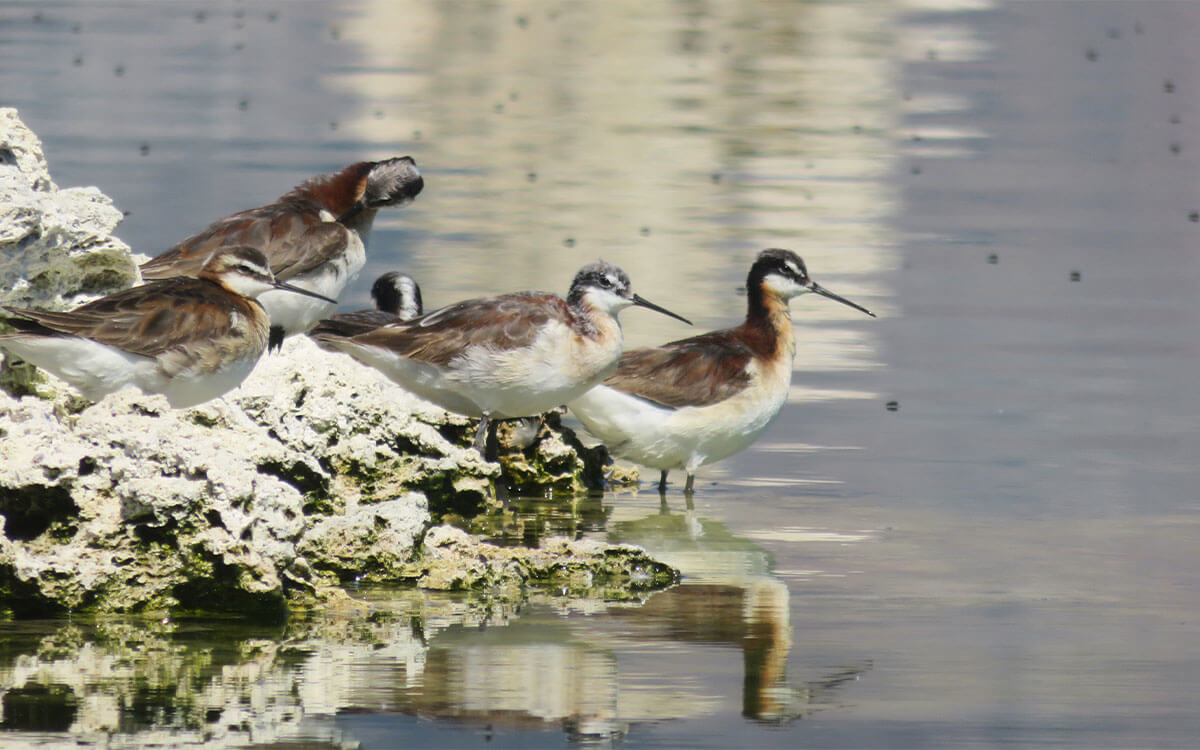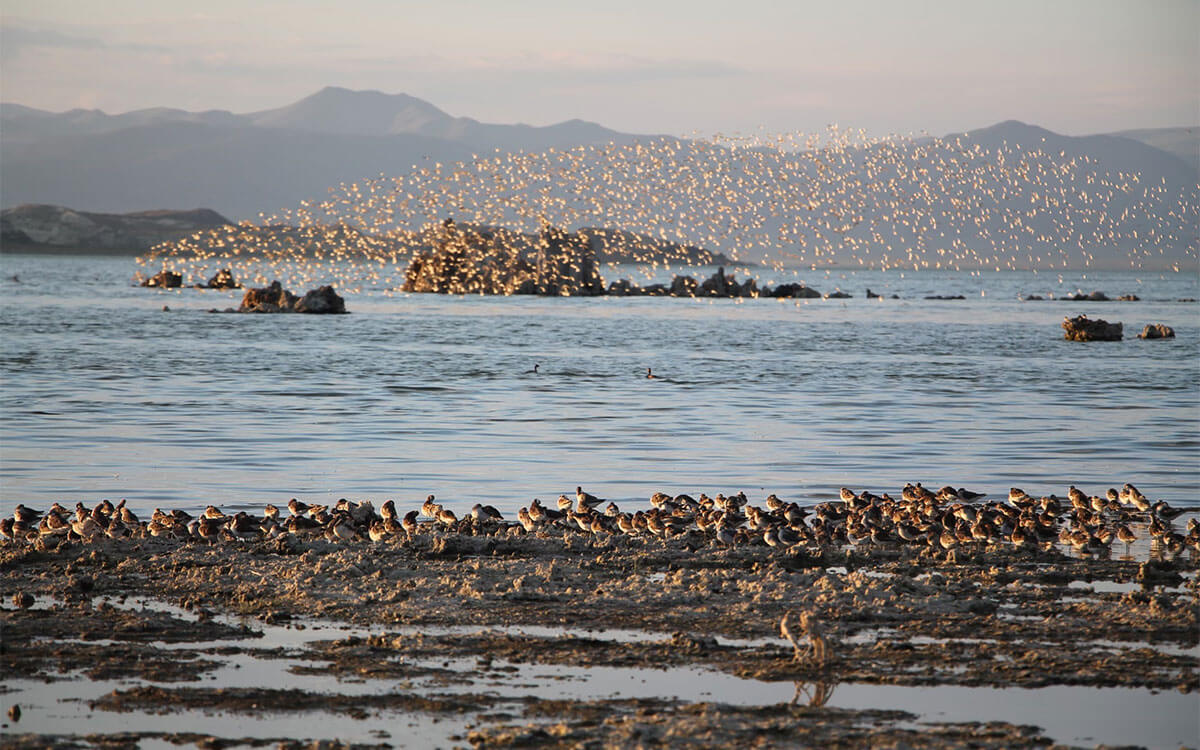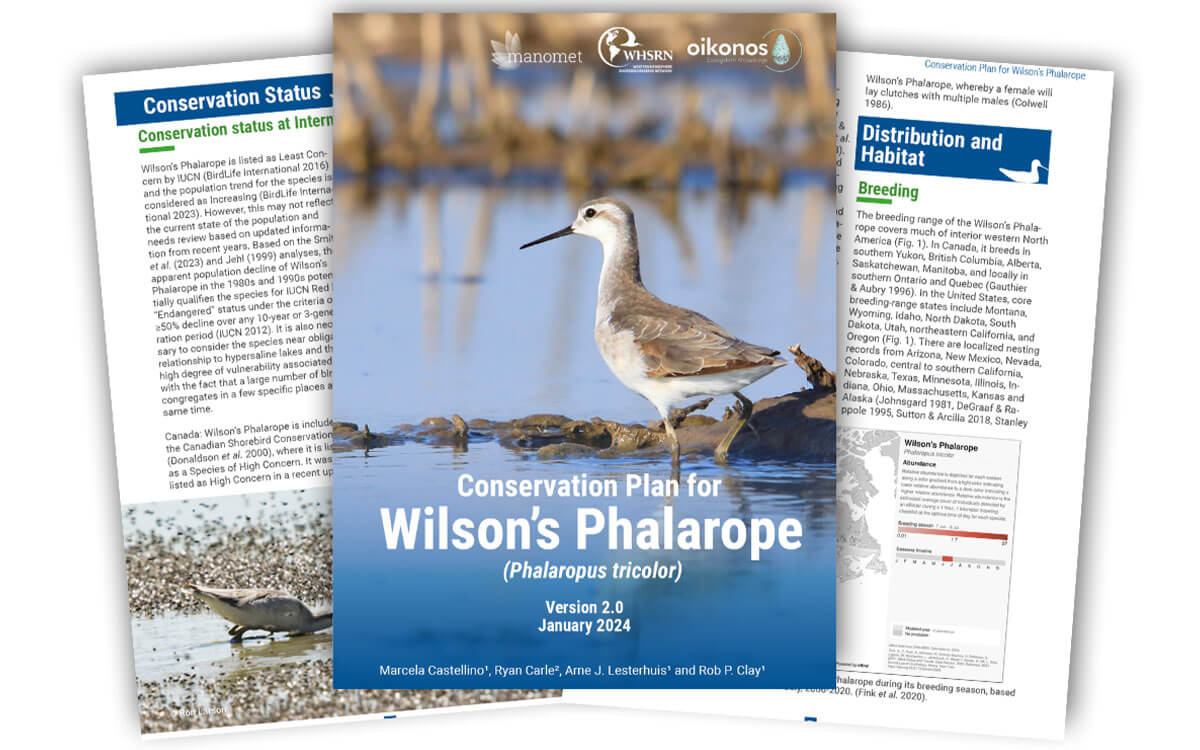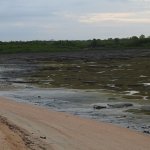Translated from Spanish by WHSRN Executive Office
After 14 years, an updated version of the Wilson’s Phalarope (Phalaropus tricolor) Conservation Plan has been released. The purpose of this version (2.0) is to update the original plan with current knowledge of the species and reassess its conservation priorities, to guide management and research, to identify gaps in knowledge that need to be filled, and to provide guidelines for developing effective conservation strategies to ensure the conservation of the Wilson’s Phalarope in both the short and long term.
In 2010, the first Conservation Plan for the species was released, which aimed to define the conservation status of the Wilson’s Phalarope throughout its range, describe threats and identify research and management needs, and outline a series of recommended conservation actions based on existing knowledge of the species. Since the publication of the original document, significant advances have been made in our understanding of the conservation status, threats, and priority conservation actions for the species, and these advances are reflected in the new document.
The Wilson’s Phalarope is a small shorebird that makes incredible migrations from one end of the Americas to the other each year. It breeds in northern latitudes (Canada and the United States) and, at the end of its breeding season, begins its migration south. Their first stop is at salt lakes in the western United States, where they rest, molt their feathers, and feed almost nonstop, doubling their weight in just three or four weeks. Once they have stored enough energy, they begin an impressive, almost non-stop journey of about 5,000 miles (8,000 km) to salt lakes in southern South America, including mainly salt lakes in the high Andean region of Bolivia, Argentina and Chile, and salt lagoons and wetlands in central Argentina.


Wilson’s Phalaropes at Mono Lake. Left: Ryan Carle. Right: Samuel Rapp.
Salt lakes are the preferred habitat of the Wilson’s Phalarope, one of the species best adapted to this particular type of habitat. The delicate web of sites that sustains the phalarope’s life is under serious threat. Increased water consumption and diversion of water from tributary rivers, as well as climatic changes such as rising temperatures and changes in rainfall patterns, have placed many of their key habitats throughout the Americas at serious conservation risk.
We hope that this new version of the Wilson’s Phalarope Conservation Plan will be useful to those interested in contributing to the enormous task of ensuring the conservation of saline wetlands and phalaropes.
We thank all partners throughout the Western Hemisphere who contributed to the update of this document by providing data on the status of their sites, population trends of the species at the site level, abundances recorded during surveys and monitoring, ongoing or planned projects related to the site and/or species, and threats to their sites and their effects on phalaropes and their habitats. We would also like to thank all those who reviewed, corrected, and provided suggestions, as well as those who generously provided their images to illustrate the document.
Download the plan here
Cover Photo: Wilson’s Phalarope foraging at Albert lake Photo: Ron Larson.







